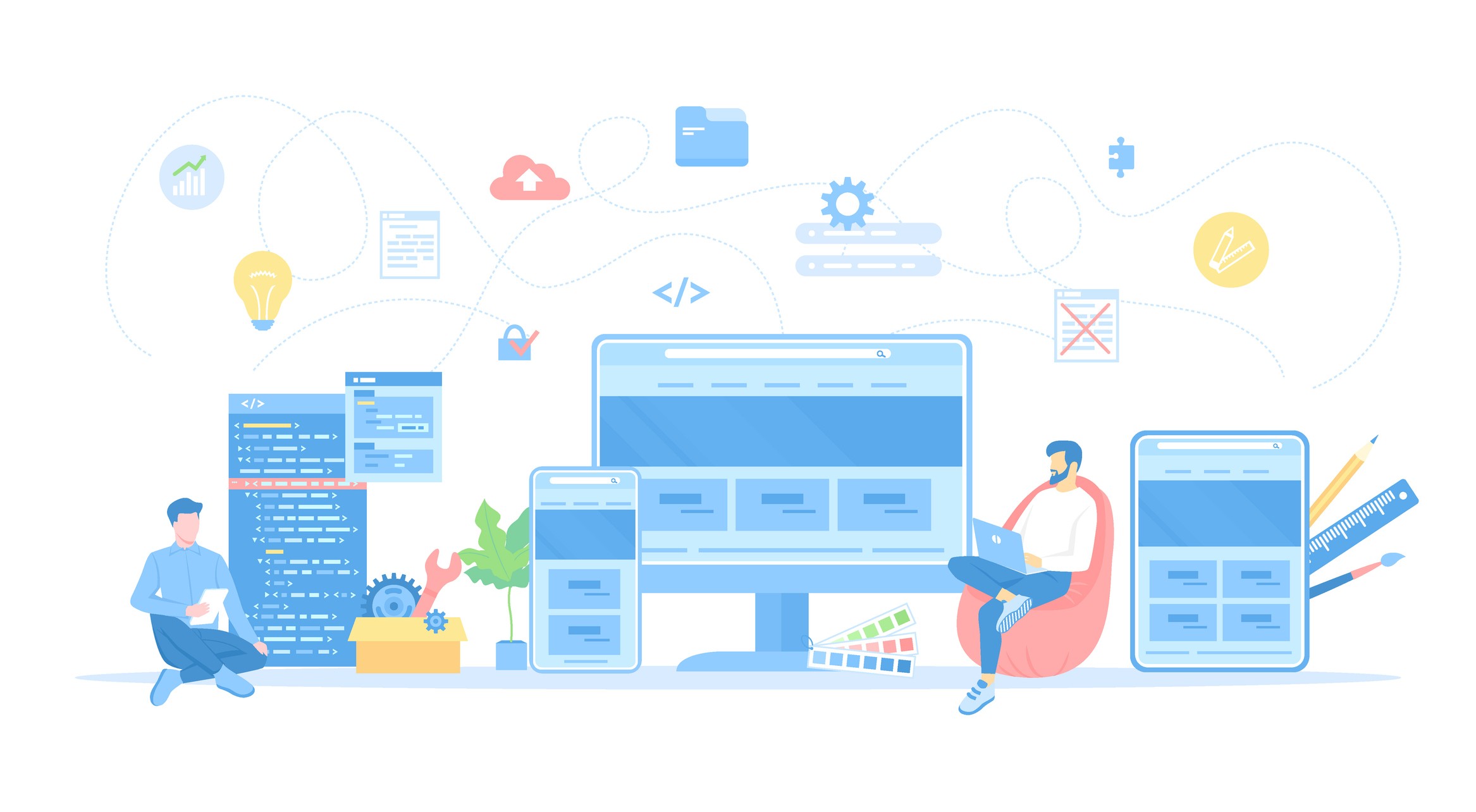No matter the size of your business, every website faces security risks that could lead to data breaches, downtime, or damage to your reputation. Cyber attacks keep getting more sophisticated, often going after vulnerabilities that many website owners don’t even realize are there.
That’s why it’s so important to take proactive steps to protect your website. By following good security practices and understanding how hackers look for weaknesses, you can lower the risk of an attack and help keep both your business and your visitors safe.
Why Protecting Your Website Should Be a Priority
Failing to protect your website can have serious consequences for your business. Even a small vulnerability can be exploited by hackers, leading to significant financial and operational harm. Many attacks are automated, targeting websites indiscriminately, regardless of size or industry.
When a website is hacked, the impact can include:
- Data loss or theft
Hackers may access sensitive customer data, including personal information and payment details, leading to privacy breaches and potential legal liabilities - Website defacement
Attackers may alter your website’s content, replacing it with malicious or offensive messages that damage your brand’s image - Malware distribution
Your website could be used to spread malware to visitors, putting their devices at risk and leading to search engine blacklisting - Service disruptions
Some hacks take your site offline entirely, resulting in lost sales, reduced customer trust, and costly downtime - Damage to search engine rankings
Hacked websites may be flagged by search engines, making it harder for potential customers to find your business
Common Website Hacks
The first step to keeping your website safe is understanding how hackers try to break in. Below are some of the most common ways websites get hacked and how these attacks work.
By knowing what to watch for, you can take the right steps to protect your website and lower the risk of getting caught off guard.
SQL Injection
SQL Injection attacks occur when an attacker inserts malicious SQL queries into input fields, such as login forms or search boxes, to manipulate the database. This can lead to unauthorized access to sensitive data, deletion of records, or even full control over your website’s database.
To protect your website from SQL Injection, always use parameterized queries or prepared statements, and avoid using dynamic SQL directly from user input.
Cross Site Scripting (XSS)
Cross Site Scripting happens when attackers inject malicious scripts into your website, which then run in the browsers of your visitors. XSS can be used to steal cookies, session tokens, or redirect users to harmful sites.
Protect your website from XSS by validating and sanitizing all user input, and by using output encoding to prevent scripts from being executed in the browser.
Malware Infections
Malware infections occur when hackers insert malicious code into your website’s files. This code may be used to spread viruses, steal data, or display spam content. Malware often goes unnoticed until search engines block your site or visitors report problems.
To protect your website, regularly scan for malware using reputable security tools and keep all software and plugins up to date to close known vulnerabilities.
Brute Force Attacks
In a brute force attack, hackers attempt to guess your website’s passwords by trying many combinations until they succeed. These attacks can lead to unauthorized logins and access to your website’s backend.
Protect your website by using strong, unique passwords, enabling two factor authentication, and limiting login attempts to block repeated failed attempts.
File Inclusion Exploits
File inclusion exploits occur when an attacker is able to load unauthorized files into your website’s code. This can give hackers access to sensitive files or allow them to execute malicious scripts.
To protect your website from file inclusion vulnerabilities, disable unnecessary file inclusion functions, validate file paths, and restrict user-uploaded files to safe types and directories.
How to Protect Your Website from Attacks
Proactively securing your website is the best defense against cyber threats. By following proven security practices, you can reduce vulnerabilities and protect your website from many common attacks. Here are key steps every website owner should take:
Keep Software Up-to-Date
Outdated software is one of the most common entry points for hackers. Regularly updating your website’s core system, plugins, themes, and extensions ensures known vulnerabilities are patched. Many attacks specifically target older versions of software, so staying current is essential to protect your website from automated exploits.
Use Strong Passwords and Two Factor Authentication
Weak passwords are easily guessed or cracked by brute force attacks. Always use complex passwords that combine uppercase and lowercase letters, numbers, and special characters. Avoid reusing passwords across multiple accounts. Adding two factor authentication creates an extra layer of protection, requiring a second verification step to access your website’s backend.
Install a Web Application Firewall
A web application firewall (WAF) helps filter malicious traffic before it reaches your website. It can block common hacking attempts such as SQL Injection and Cross Site Scripting. By installing a reputable WAF, you add an important line of defense that continuously monitors and protects your website in real time.
Run Regular Backups
Even with strong security measures in place, it’s important to be prepared in case of a breach. Regular backups allow you to restore your website quickly if files are compromised or data is lost. Schedule automated backups and store them securely in an offsite location so they remain accessible if your server is affected.
Limit File Upload Permissions
Allowing users or staff to upload files can introduce risks if not properly managed. Restrict file uploads to only the types of files you need, and store them in directories that do not execute code. Scan all uploaded files for malware before they are used on your site. By tightening upload permissions, you reduce the chance of malicious files being introduced.
Beyond the Basics to Protect Your Website
There are extra steps you can take that many website owners overlook. These smaller details can make a big difference in keeping your site secure:
- Rename your admin login page
Changing the default admin login URL makes it harder for bots and automated attacks to find the entrance - Remove unused plugins and themes
Even inactive plugins and themes can create security risks if they’re outdated, so delete anything you’re not actively using - Set file permissions carefully
Double check that sensitive files and folders have strict permission settings to prevent unauthorized access - Use a staging environment for testing
Avoid testing new features or updates on your live site where mistakes can open up vulnerabilities - Add login alerts
Get notified immediately if someone logs in from a new device or location so you can respond quickly to suspicious activity - Review user accounts regularly
Remove old or unused user accounts and limit admin-level access to only those who absolutely need it
Advanced Measures to Strengthen Your Website Security
In addition to basic security practices, there are advanced steps you can take to further protect your website and reduce the risk of sophisticated attacks. These measures enhance your site’s defenses and provide additional safeguards against emerging threats.
Implement Security Headers
Adding security headers to your website configuration is a simple but powerful way to protect your website from common browser-based attacks. Below are some key headers with examples you can add to your .htaccess file (for Apache servers) or server config.
Security headers to configure include:
Content Security Policy (CSP)
A Content Security Policy restricts which sources are allowed to load scripts, styles, images, and other content. This reduces the risk of Cross Site Scripting (XSS). The below example allows scripts and styles only from your own domain and https://trusted.cdn.com. Adjust the domains to match your needs.
Header set Content-Security-Policy "default-src 'self'; script-src 'self' https://trusted.cdn.com; style-src 'self' https://trusted.cdn.com"
X Frame Options
The X Frame Options header prevents your website from being embedded inside an iframe on another site, which protects against clickjacking attacks. The below setting only allows your website to be framed by pages on the same domain.
Header always set X-Frame-Options "SAMEORIGIN"
X Content Type Options
The X Content Type Options header stops browsers from guessing or changing the declared content type of files. This prevents some types of drive-by downloads or MIME sniffing attacks. The below example tells browsers to respect the content type specified by the server
Header set X-Content-Type-Options "nosniff"
Strict Transport Security (HSTS)
The Strict Transport Security header enforces HTTPS connections by telling browsers to always connect securely to your website, even if users type http://. The below example forces HTTPS for one year (max-age=31536000 seconds), applies to all subdomains, and signals eligibility for browser preload lists. Only use this once you have HTTPS fully configured.
Header always set Strict-Transport-Security "max-age=31536000; includeSubDomains; preload"
Tip: If you are using NGINX, these headers can be added inside your server block instead:
add_header Content-Security-Policy "default-src 'self'";
add_header X-Frame-Options "SAMEORIGIN";
add_header X-Content-Type-Options "nosniff";
add_header Strict-Transport-Security "max-age=31536000; includeSubDomains; preload";
Adding these headers strengthens your website’s defenses by reducing the risk of common attacks. Always test your site after adding headers to ensure nothing breaks.
Scan for Vulnerabilities
Regular vulnerability scanning identifies weak points in your website’s code, software, and configurations before hackers can exploit them. Automated tools can detect outdated components, insecure settings, and exposed files. By scanning your website on a routine basis, you can catch issues early and apply fixes to protect your website from known vulnerabilities.
Monitor Traffic and Login Activity
Monitoring your website’s traffic and login activity helps you spot suspicious behaviour before it leads to a breach. Watch for unexpected spikes in traffic, unusual login attempts, or failed access from unfamiliar locations. Many security plugins and web hosting platforms offer monitoring dashboards that track and alert you to potential security events. By staying aware of activity on your site, you can respond quickly and take action to protect your website if something unusual occurs.
Regular Security Audits Help Protect Your Website
Even with strong security measures in place, vulnerabilities can develop over time as software, plugins, and online threats evolve. A regular website security audit plays a key role in keeping your website protected by uncovering hidden risks and ensuring your defenses remain effective.
Professional Website Security Audit
A professional security audit provides a thorough evaluation of your website’s infrastructure, code, and configuration.
- Identifying overlooked vulnerabilities
Detect security gaps that may not be visible through automated scans alone - Reviewing access controls
Ensure only authorized users have access to sensitive areas of your website - Evaluating update and patch status
Check whether all software components are current and secure - Assessing security policies
Review how data is handled, stored, and protected across your website - Providing actionable recommendations
Receive guidance on how to fix issues and improve your overall security posture
A website security audit not only protects your website from existing threats but also helps you stay ahead of new risks as they emerge.
For businesses that want expert support, we offer Website Security Audit and Hardening Services to thoroughly assess and strengthen your website’s security.
Building Long Term Protection for Your Website
Securing your website is not a one-time task but an ongoing commitment. Every website faces risks, but by staying proactive, you can greatly reduce the chance of being compromised.
To protect your website effectively, start by following essential practices: keep all software updated, use strong passwords with two factor authentication, install a web application firewall, run regular backups, and control file upload permissions. For even stronger protection, consider adding security headers, scanning regularly for vulnerabilities, and monitoring your site’s activity.
By taking these steps now, you safeguard your business, your customers, and your reputation from the costly impact of cyber attacks.




